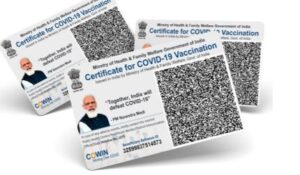Varicose veins are a common vascular condition that occurs when the veins, usually in the legs, become swollen and twisted. While they are often considered a cosmetic concern, varicose veins medical treatment can lead to discomfort and more severe complications if left untreated. Delve into the various medical treatments available for varicose veins, exploring their effectiveness and potential benefits.
1.The Anatomy of Varicose Veins
To comprehend the medical treatments for varicose veins, it’s crucial to understand the underlying anatomy. Veins have one-way valves that help blood flow upward against gravity. When these valves weaken or fail, blood can pool in the veins, causing them to enlarge and become varicose. The most common areas for varicose veins are the legs, where the veins endure increased pressure due to standing and walking.
2. Conservative Management
Before exploring medical interventions, it’s essential to highlight conservative measures that can alleviate symptoms and slow down the progression of varicose veins.
- Compression Stockings
Wearing compression stockings is a non-invasive approach that helps improve blood circulation by applying pressure to the legs. This can reduce swelling and discomfort associated with varicose veins.
- Lifestyle Modifications
Simple lifestyle changes, such as regular exercise, maintaining a healthy weight, and elevating the legs when resting, can contribute to managing varicose veins. Avoiding prolonged periods of standing or sitting is also beneficial.
3. Sclerotherapy
Sclerotherapy is a widely used and minimally invasive medical procedure for treating varicose veins. This procedure involves injecting a special solution directly into the affected veins, causing them to collapse and eventually fade away. Sclerotherapy is particularly effective for smaller veins and spider veins.
- How Sclerotherapy Works
During sclerotherapy, a sclerosing agent, often in the form of a liquid or foam, is injected into the varicose vein. This solution irritates the lining of the vein, causing it to swell and stick together. Over time, the body absorbs the collapsed vein, and blood is rerouted through healthier veins.
- Advantages and Considerations
Sclerotherapy is an outpatient procedure that usually does not require anesthesia. It is well-tolerated, and patients can resume normal activities shortly after treatment. However, multiple sessions may be necessary for optimal results.
4. Endovenous Laser Ablation
Endovenous Laser Ablation, also known as laser therapy, is a modern and effective treatment for varicose veins. This procedure uses laser energy to close off problematic veins, redirecting blood flow to healthier vessels.
- How EVLA Works
A thin laser fiber is inserted into the varicose vein through a small incision. The laser emits heat, causing the vein to collapse and seal shut. The closed vein is eventually absorbed by the body, and blood is rerouted through nearby healthy veins.
- Advantages and Considerations
EVLA is a less invasive alternative to traditional vein stripping surgery. It typically requires only local anesthesia and is associated with minimal discomfort. Patients usually experience rapid relief from symptoms and can resume normal activities within a short recovery period.
5. Radiofrequency Ablation
Radiofrequency Ablation is another minimally invasive procedure that uses heat to treat varicose veins. This technique involves the use of radiofrequency energy to close off the affected vein.
- How RFA Works
A thin catheter is inserted into the varicose vein, delivering radiofrequency energy to heat the vein wall. This causes the collagen in the vein wall to contract, leading to the closure of the vein. Like EVLA, the closed vein is eventually absorbed by the body.
- Advantages and Considerations
RFA is associated with high success rates and low complication rates. It is performed on an outpatient basis, and patients can return to normal activities shortly after the procedure. RFA is well-tolerated, with minimal pain or bruising.
6. Ambulatory Phlebectomy
Ambulatory Phlebectomy is a surgical procedure that involves the removal of varicose veins through tiny incisions. This method is particularly effective for larger varicose veins that may not respond as well to non-surgical treatments.
- How Ambulatory Phlebectomy Works
Small incisions are made near the varicose veins, and a special tool is used to extract the affected veins. The incisions are so small that stitches are typically not required. This procedure is often performed in conjunction with other treatments for comprehensive vein management.
- Advantages and Considerations
Ambulatory Phlebectomy is a more invasive option compared to some other treatments, but it is highly effective for removing large varicose veins. It can be performed under local anesthesia, and patients usually experience minimal scarring.
7. Surgical Vein Stripping
While less common today due to the advent of minimally invasive procedures, surgical vein stripping may still be recommended in certain cases, especially when dealing with extensive varicose veins.
- How Vein Stripping Works
In this surgical procedure, the affected vein is physically removed from the body. This is done through a series of small incisions, and the surgeon uses a special tool to strip out the problematic vein.
- Advantages and Considerations
Vein stripping is more invasive than many other treatments and may require general anesthesia. Recovery time is typically longer compared to minimally invasive procedures. It is often reserved for severe cases or when other treatments have been unsuccessful.
8. Advantages of Seeking a Varicose Veins Doctor in Delhi
Delhi, the bustling capital of India, is not only known for its rich history and vibrant culture but also for being a hub of advanced medical care. The benefits of seeking a varicose veins doctor in Delhi and how the city’s medical expertise can contribute to comprehensive vascular care.
- Access to Specialized Vascular Clinics
One of the primary advantages of finding a varicose veins doctor in Delhi is the availability of specialized vascular clinics. These clinics are equipped with state-of-the-art facilities and technologies specifically designed for the diagnosis and treatment of vascular conditions. From advanced imaging techniques to cutting-edge minimally invasive procedures, these clinics provide a comprehensive approach to managing varicose veins.
- Expertise in Minimally Invasive Procedures
Delhi boasts a pool of highly skilled vascular specialists who are well-versed in the latest minimally invasive procedures for treating varicose veins. Techniques such as endovenous laser ablation (EVLA), radiofrequency ablation (RFA), and sclerotherapy are commonly employed to address varicose veins with precision and minimal discomfort. Seeking a varicose veins doctor in Delhi ensures access to these advanced and effective treatment options.
Conclusion
Varicose veins are a common condition that can cause discomfort and affect the quality of life. Fortunately, there are various medical treatments available, ranging from non-invasive measures like compression stockings to minimally invasive procedures like sclerotherapy, endovenous laser ablation, and radiofrequency ablation. In more severe cases, surgical options like ambulatory phlebectomy or vein stripping may be considered. The choice of treatment depends on the size and location of the varicose veins, as well as the overall health of the individual. Consulting with a vascular specialist can help determine the most appropriate and effective course of action for managing varicose veins.











